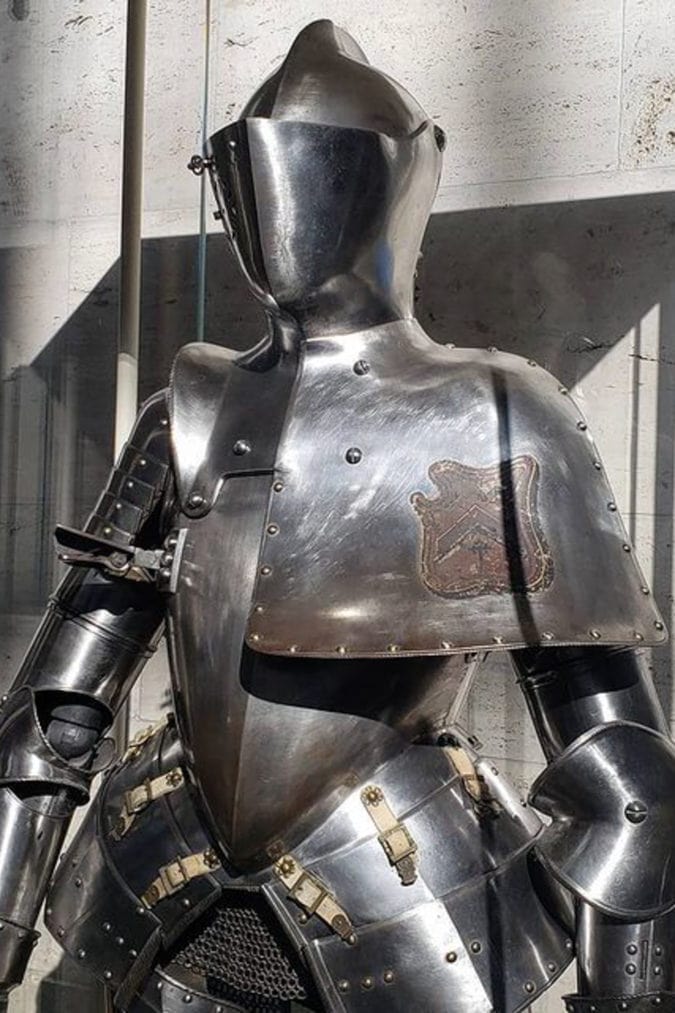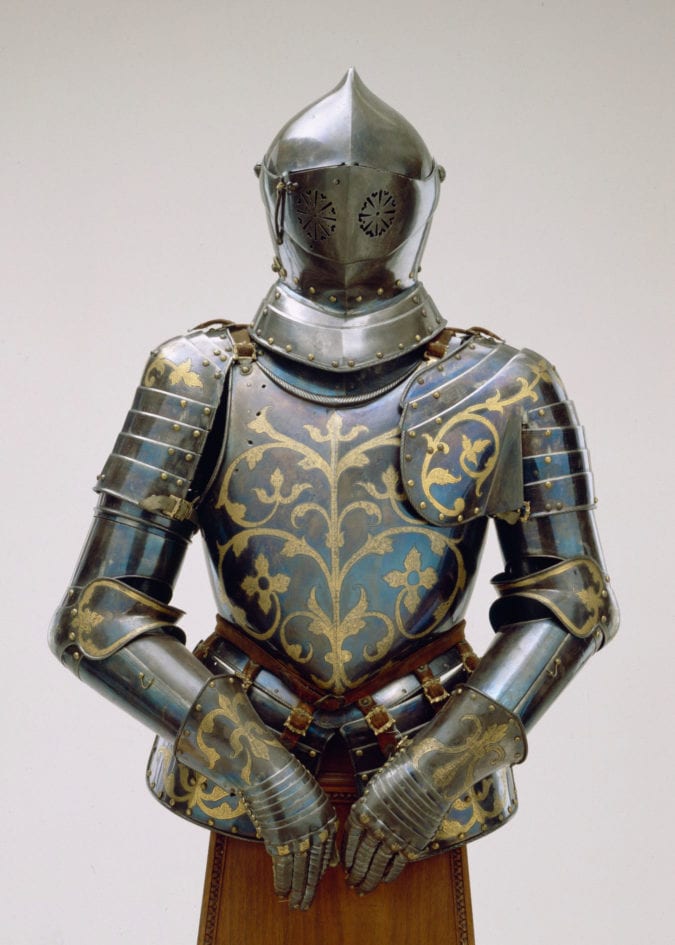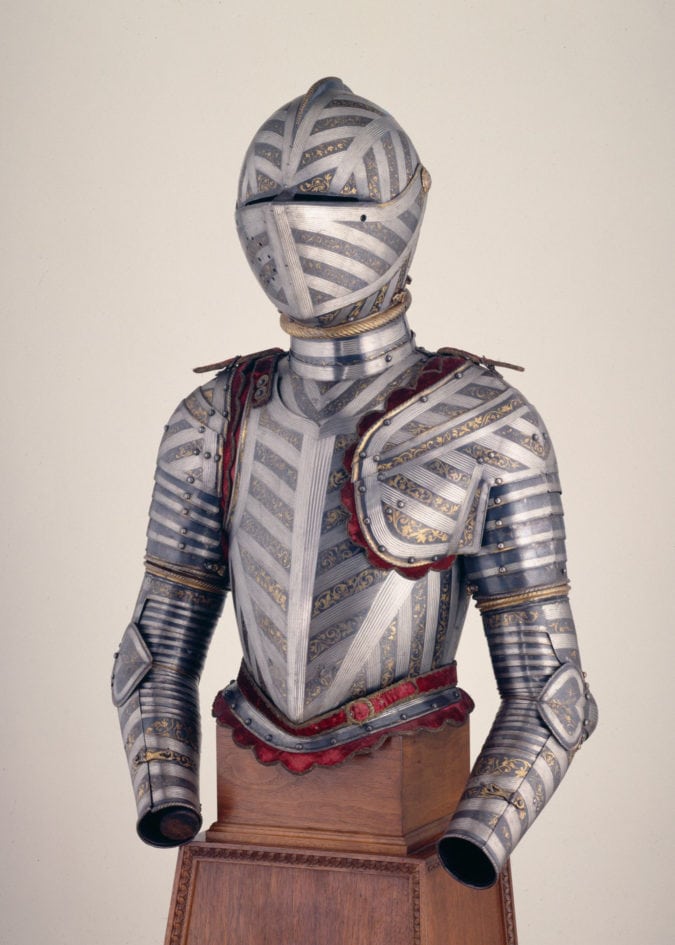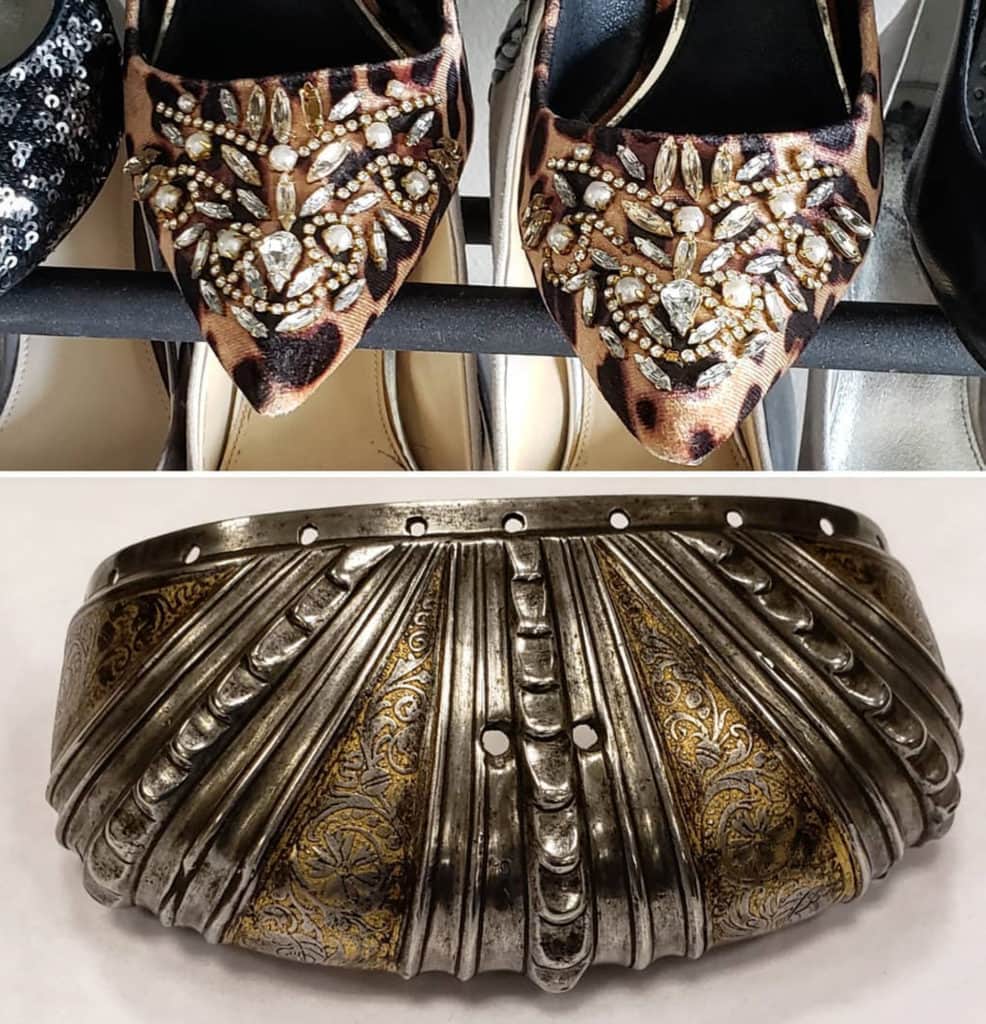Suits of armor, popular in late 15th- and early 16th-century Europe, are usually associated with men. But the Detroit Institute of Arts (DIA), is trying to change that—in 2020, Chassica “Chaz” Kirchhoff, one of only a few known female armor specialists in the world, became the first to join DIA’s curatorial staff.
DIA’s arms and armor collection is among the best in North America. Much of it was loaned to the museum in the 1940s by publishing magnate William Randolph Hearst, whose foundation made a gift of the works following his death in 1951. Kirchhoff says that suits of armor conjure the sense of a person long-dead. “In the case of arms and armors, these works bore witness to significant events and historical experiences, not only of war, but also courtly pageantry like tournaments,” she says.
In Hearst’s time, armor collectors “display[ed] ‘suits’ of armor that evoked the presence of an imagined knight of old,” Kirchhoff says. They combined pieces from disparate suits of armor in ways that actually camouflaged the original function. For example, DIA’s collection includes children’s armor made for the future Grand Duke Cosimo II de Medici when he was between 10 and 15 years old.
“It’s a fantastic and very rare example of Florentine armor-making,” says Kirchhoff. “When I arrived in Detroit, most of the curators, staff, and gallery teachers assumed that—since this was armor for a child—the armor had only been used for parades, rather than real tournament contests. It was fun and satisfying to set this inherited misunderstanding right by pointing out the sword or pole-axe cuts that appear across the helmet’s reinforced brow.”


Kirchhoff calls this deep dive “display archeology,” or digging into the history of pieces on exhibit, some of which have been on the same mannequins since 1948. As part of a research and rehousing project funded by the National Endowment for the Arts, Kirchhoff says she has been able to “help to uncover the compelling and sometimes poignant stories that reside in these works of art.”
Wealth, power, and masculinity
Kirchhoff outlines three main armor types: battle, tournament, and parade armor. Battle armor was intended to defend the wearer from enemies. Its smooth surfaces deflected blows and its relatively light weight allowed the wearer to run away if things weren’t going in his favor.
Perhaps counterintuitively, tournament armor was stronger. “[It’s] hyper protective because you’re wailing on your friends and you want to protect them,” Kirchhoff says. The pieces were designed for a specific type of tournament and were more heavily decorated. Some of the most elaborate pieces come from parade armor whose purpose was to show off wealth, power, and masculinity.
Cosimo II’s set is considered tournament armor, as are some of DIA’s pieces from a sumptuous set commissioned by Sophie of Brandenburg for her ill-fated husband, Christian I, Elector of Saxony. She enlisted armorer Anton Peffenhauser, one of the top metal artists of his day, to create 12 elaborately decorated suits of armor for the tournament on foot.


“Sophie planned to present these armors to Christian—who loved tournaments—as a Christmas gift in 1591,” explains Kirchhoff. When Christian died unexpectedly in September of that year, at age 30, Peffenhauser still delivered the finished armors; Sophie had them installed in a special armory and stables.
Because Hearst and his contemporaries had a penchant for combining pieces into new suits, Kirchhoff and her colleagues have discovered that several of DIA’s Christian I pieces actually belong with others housed in museums across the world. “Reclaim[ing] artwork in the name of the people who made and wore them is super, super satisfying,” Kirchhoff says.
Impermeable surfaces
Women had a hand in commissioning armor during its heyday, but what about making or wearing it themselves? It wasn’t common, says Kirchhoff, but there are a few known instances. In 14th-century England, guild records offer some insight: “Having learned to make mail from her father by 1309, Alice ‘la Haubergere’ (the mail shirt maker) of London retained her occupational surname after her marriage,” Kirchhoff shared via Instagram recently. “In 1403, Agnes Hecche of York inherited from her father ‘all the instruments of his craft of mailwork.’”
The same wasn’t true in 16th-century Germany where Peffenhauser worked. There, the powerful armor-making guilds of the 15th and 16th centuries levied heavy fines or jail time against armorers who allowed women to work on the armor, possibly to keep their perceived weakness from tainting the strength of the suits’ protection.
“Armor is a marker of masculinity [that creates] an impermeable body,” Kirchhoff says. “In wearing it, you are acknowledging that you are a fragile being, but you’re also crafting this impermeable surface.” The taboo against women extended to wearing the armor, as well. When the English tribunal couldn’t convict Joan of Arc of heresy, they convicted her of cross-dressing (a crime) for wearing soldier’s attire, including armor given to her by the Dauphin of France.


The power of wearable objects
But the laws didn’t mean women weren’t involved in the history of armor-making. Kirchhoff notes that the specificity of the German guild rules indicate women probably were already working on armor when the guilds began trying to stamp it out. Additionally, “wives of armorers had a ton of power in the guild system,” she says. In many cases, armorers’ widows could maintain control over a late husband’s workshop, and they wielded considerable power in choosing new husbands who would inherit well-regarded forges.
I’m not surprised when I see an Instagram post from Kirchhoff after just two months of working remotely during the COVID-19 pandemic. It’s an image of modern high-heeled shoes next to ornate Medieval armored toe caps.
“I just realized that it’s the longest time in my adult life that I’ve gone without wearing my signature high heels,” she writes. “Looking at my shoes, quiet on their rack for the sake of my downstairs neighbors, I’m reminded of some favorite and lesser-known objects. […] Though potentially dismissed as more frivolous vestiges of the defensive art of armor-making, their preservation and journeys across centuries demonstrate the persistent power and allure of such wearable objects.”
If you go
The Detroit Institute of Arts is open Wednesday through Friday from 9 a.m. to 4 p.m., Saturday and Sunday from 10 a.m. to 5 p.m., and closed Monday and Tuesday.







